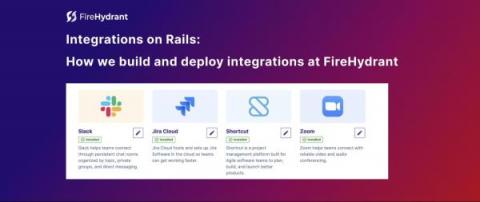Integrations on Rails: How we build and deploy integrations at FireHydrant
Implementing integrations without a mountain of technical debt can be challenging. But it doesn’t have to be all bugs, burn out, and outages when shipping integrations at a high volume. We’ve unlocked a pattern at FireHydrant to rapidly build and release integrations without swiping the technical debt credit card each time — and that gave us a fastlane to building premier integrations.




